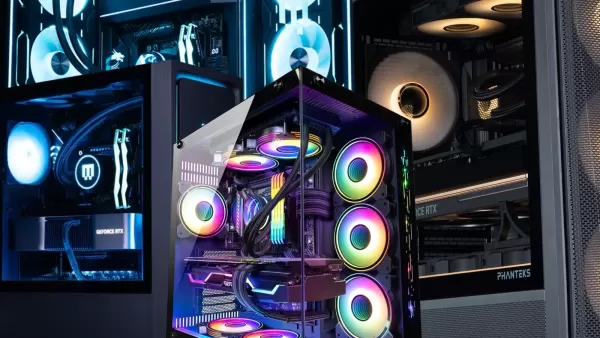

The Excitement and Challenges of Upgrading to RTX 5080
Every new graphics card launch fills me with excitement, especially when Nvidia unveiled the RTX 5080 featuring groundbreaking DLSS 4 technology. This AI-powered innovation promises enhanced visuals and frame rates beyond previous limitations. Yet my enthusiasm momentarily wavered when I glanced at my aging gaming rig - would this powerhouse even work with my setup?
My trusty RTX 3080 had delivered solid performance for years, initially achieving 60 fps at 4K ultra settings. But gradually, its performance diminished to 30 fps, forcing me to compromise on visual quality. As someone who appreciates gaming artistry, this frustrated me - developers pour their vision into these worlds, and I wanted to experience them fully. The big question remained: could my system handle an RTX 5080?
The Installation Odyssey
The good news? The RTX 5080 technically works with my older components. My 1000W PSU could even accommodate the power requirements. However, the installation process proved far more challenging than anticipated.
My setup isn't ancient - it features an AMD Ryzen 7 5800X, 32GB RAM, and a Gigabyte X570 Aorus Master motherboard. Yet when I attempted to install the new GPU, multiple obstacles emerged:
- First, the power connectors required upgrading - my existing 8-pin PCIe cables weren't sufficient
- A novel solution emerged: I DoorDashed Corsair Gen 5 power cables from out-of-state
- Even after solving the power issue, the GPU wouldn't seat properly due to motherboard clearance problems
- Ultimately, I had to compromise by using a PCIe x8 slot instead of x16

Performance Analysis
Benchmarking revealed interesting results across five demanding titles. Without DLSS 4, performance proved underwhelming - likely due to my aging components and compromised PCIe configuration. However, activating DLSS 4 transformed the experience:
Game Performance Highlights
| Game | Settings | Native FPS | DLSS 4 FPS |
|---|---|---|---|
| Monster Hunter Wilds | 4K Ultra RT High | 51 | 124 (Ultra Perf.) |
| Avowed | 4K Ultra RT On | 35 | 113 (DLAA+MFG) |
| Oblivion Remastered | 4K Ultra RT Ultra | 30 (avg) | 95 (DLAA+MFG) |
The performance leaps with DLSS 4 were astounding - in some cases more than tripling frame rates. Multi Frame Generation (MFG) technology, unique to RTX 50-series cards, proved particularly impressive by generating up to three AI frames per real frame.

Key Takeaways
While not without limitations, this experience revealed several important insights:
- DLSS 4 isn't magic - artifacts and texture fuzziness can occur, especially in UI elements
- The technology serves best as a bridge for aging hardware rather than a replacement for optimization
- GPU upgrades don't necessarily require full system overhauls
- Power requirements (850W minimum) remain a crucial consideration
For gamers considering an upgrade, the main lesson is clear: while a new GPU can breathe life into older systems, managing expectations is crucial. The RTX 5080 delivers phenomenal performance with DLSS 4 enabled, but raw performance gains are more modest. Nevertheless, this technology has effectively extended my system's lifespan - at least until the next big GPU launch tempts me again.








